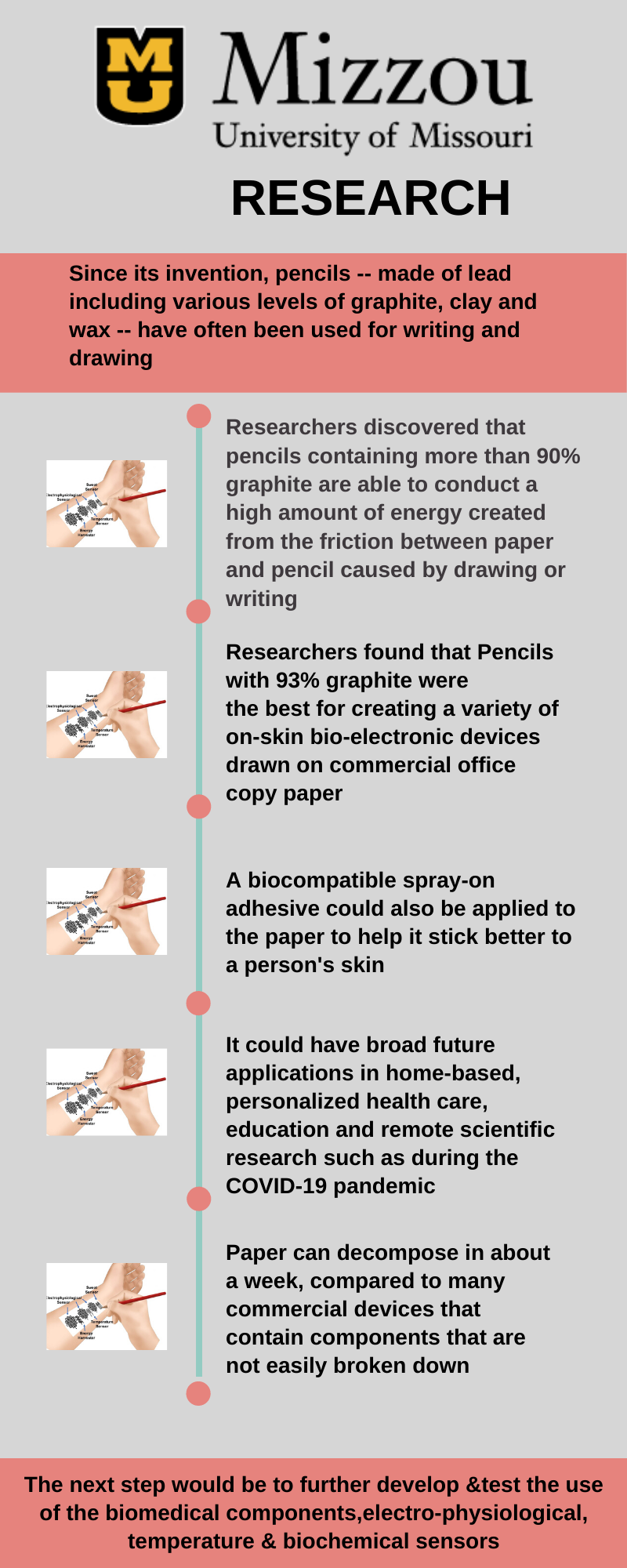Columbia: One day, people could monitor their own health conditions by simply picking up a pencil and drawing a bioelectronic device on their skin. In a new study, University of Missouri (MU) engineers demonstrated that the simple combination of pencils and paper could be used to create devices that might be used to monitor personal health.
Their findings are published in the journal Proceedings of the National Academy of Sciences.
Also Read:'Make in India' tech innovations, Digital Service initiatives and more by Reliance Jio
Zheng Yan, an assistant professor in the College of Engineering, said many existing commercial on-skin biomedical devices often contain two major components -- a biomedical tracking component and a surrounding flexible material, such as plastic, to provide a supportive structure for the component to maintain an on-skin connection with a person's body.
"The conventional approach for developing an on-skin biomedical electronic device is usually complex and often expensive to produce," he said. "In contrast, our approach is low-cost and very simple. We can make a similar device using widely available pencils and paper."

"For example, if a person has a sleep issue, we could draw a biomedical device that could help monitor that person's sleep levels," he said. "Or in the classroom, a teacher could engage students by incorporating the creation of a wearable device using pencils and paper into a lesson plan. Furthermore, this low-cost, easily customizable approach could allow scientists to conduct research at home, such as during a pandemic."
Also Read: Insight into Twitter hacks using Bitcoin Scam by Col. Inderjeet Singh, DG, CSAI



